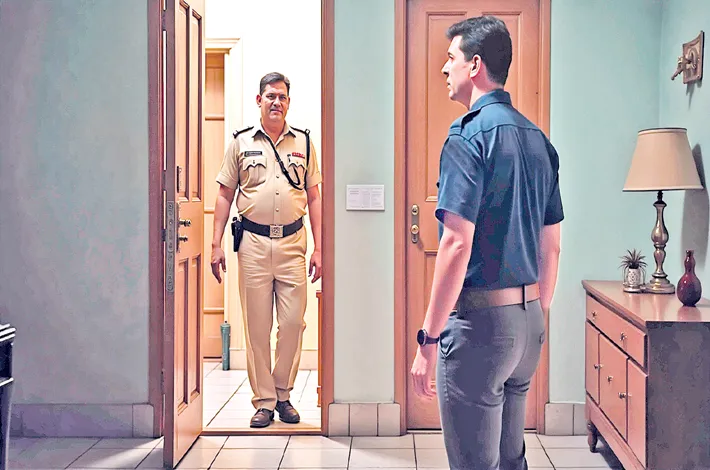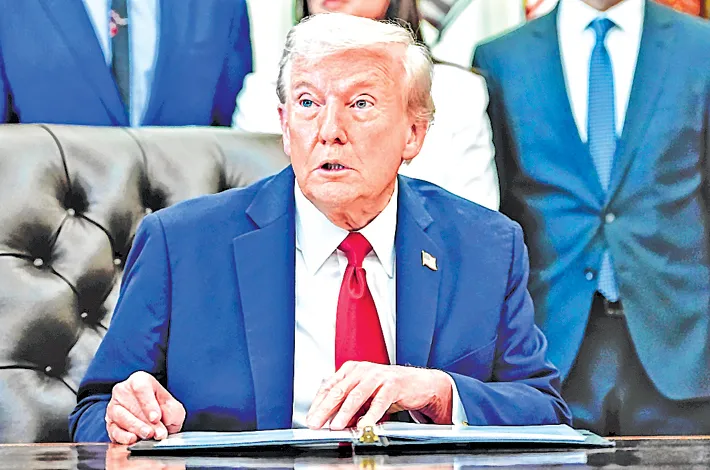The Shadow of the Serpent Calcutta, 1936
13-10-2025 12:00:00 AM

The monsoon rains battered the narrow lanes of North Calcutta, turning the cobbled streets into rivulets of mud. Byomkesh Bakshi sat by the window of his modest Messbari Street flat, sipping tea, his eyes scanning the pages of Anandabazar Patrika. Ajit, his friend and chronicler, lounged on a cane chair, engrossed in a novel.
“Another murder in Shyambazar,” Byomkesh remarked, folding the newspaper. “The third this month. All women, all strangled, all left with a peculiar mark—a coiled serpent drawn in chalk beside the body.”
Ajit looked up, intrigued. “A ritualistic killer? Sounds like something out of your wheelhouse, Byomkesh.”
Byomkesh’s lips curled into a faint smile. “Not ritualistic, Ajit. Calculated. The serpent is a message, not a fetish. And I suspect the police are fumbling in the dark.”
As if on cue, a sharp knock echoed through the room. Inspector Pramatha Bose, a burly man with a perpetually harried expression, stood at the door, his umbrella dripping onto the floor.
“Byomkesh, we need you,” Bose said without preamble. “This killer’s making fools of us. Three murders, no witnesses, no clues—except that blasted serpent drawing.”
Byomkesh leaned back, his eyes gleaming. “Tell me everything.”
The Case Unfolds
The victims were unrelated at first glance: Lakshmi Das, a widow running a small sweet shop; Sarojini Roy, a schoolteacher; and Kamala Sen, a dancer at a local theatre. Each was found in a secluded alley, strangled with a silk scarf, a chalk-drawn serpent coiled menacingly beside them. The police had no leads, no suspects, and the city was gripped by fear.
Byomkesh and Ajit visited the latest crime scene, a damp alley behind the Star Theatre. The air reeked of decay and wet earth. The serpent drawing was stark against the grimy wall, its curves precise, almost artistic.
“Notice the chalk,” Byomkesh said, crouching. “It’s not common street chalk. This is artist’s chalk, soft and powdery, used by painters or sculptors. Our killer has an eye for detail.”
Ajit frowned. “But why a serpent? Some cult symbol?”
Byomkesh shook his head. “Not a cult. A signature. The killer wants us to know it’s the same hand. But why these women? They seem unconnected.”
Back at the flat, Byomkesh spread out the case files, his fingers drumming on the table. “Lakshmi, Sarojini, Kamala. Different ages, professions, neighborhoods. Yet the killer chose them. There’s a pattern we’re missing.”
He pored over the victims’ lives, interviewing neighbors, colleagues, and family. Lakshmi had been a devout woman, often seen at the local Kali temple. Sarojini was reserved, her only indulgence being weekly visits to a bookshop. Kamala, the dancer, was flamboyant, rumored to have admirers among Calcutta’s elite.
Byomkesh’s breakthrough came from an unexpected source—a street hawker near the theatre who recalled seeing a man with a limp watching Kamala’s performances. “He was always there, sketching her in a notebook,” the hawker said. “Wore a dark coat, kept to himself.”
The Trail Narrows
Byomkesh and Ajit scoured the city for the limping man. Their search led them to an art gallery in Bowbazar, where a reclusive painter named Nikhil Sanyal was exhibiting his work. Sanyal, a gaunt man with a pronounced limp, specialized in mythological paintings—many featuring serpents as symbols of vengeance.
At the gallery, Byomkesh studied Sanyal’s canvases. One painting, Kali’s Wrath, depicted the goddess strangling a demon, a silk scarf in her hands. The resemblance to the murder method was uncanny.
“Sanyal’s our man,” Ajit whispered. “The limp, the serpents, the scarf—it all fits.”
Byomkesh’s eyes narrowed. “Too perfect, Ajit. A true criminal doesn’t leave such obvious breadcrumbs. Let’s meet him.”
Sanyal was polite but guarded, his studio cluttered with sketches and half-finished paintings. When questioned about the murders, he denied any involvement, claiming his limp kept him from wandering alleys at night. “I paint myths, not crimes,” he said coldly.
But Byomkesh noticed a detail: a box of artist’s chalk on Sanyal’s desk, identical to that used at the crime scenes. He also found a sketch of Kamala Sen, her face radiant yet hauntingly lifeless.
The Twist
Back at the flat, Byomkesh paced, his mind racing. “Sanyal’s involved, but he’s not the killer. The limp is real—he couldn’t navigate those alleys silently. Someone’s using his art, his chalk, his obsession with serpents to frame him.”
Ajit was skeptical. “Then who?” Byomkesh’s gaze fell on the case files. “The victims weren’t random. Lakshmi, Sarojini, Kamala—they all rejected someone. A suitor, perhaps. Someone who saw their rejection as betrayal, deserving of a serpent’s vengeance.”
Digging deeper, Byomkesh uncovered a link: all three women had crossed paths with a young lawyer, Anil Chatterjee, who frequented the temple, bookshop, and theatre. Chatterjee was charming, well-connected, and had a reputation for pursuing women relentlessly. When rejected, he’d grown bitter, his pride wounded.
Byomkesh set a trap. He had Inspector Bose leak a story to the press about a new witness in the case, hoping to draw the killer out. That night, under the cover of rain, Byomkesh and Ajit staked out an alley near the Kali temple.
Sure enough, Chatterjee appeared, his face twisted with rage, a silk scarf in his hand. He was stalking a new target—a young widow who’d spurned him. Before he could strike, Byomkesh intervened, pinning him down with Bose’s help.
The Confession
In custody, Chatterjee broke down. He’d been humiliated by the women’s rejections, seeing himself as a wronged god dispensing justice. The serpent symbol was inspired by Sanyal’s paintings, which he’d seen at the gallery. He’d stolen Sanyal’s chalk to cast suspicion on the painter, knowing the police would seize on the obvious suspect.
“I wanted them to fear me,” Chatterjee spat. “The serpent is eternal, unyielding. They deserved it.” Byomkesh looked at him with quiet disdain. “Your serpent was no god, Chatterjee. Just a man’s fragile ego, coiled in hatred.”
Epilogue
As the rains cleared, Calcutta breathed easier. Sanyal, cleared of suspicion, gifted Byomkesh a painting—not of serpents, but of a tranquil Ganges at dawn. Ajit, ever the storyteller, began drafting the case for his chronicles. Byomkesh sipped his tea, gazing out at the city. “The human mind, Ajit, is the true labyrinth. No serpent can match its twists.”








